How can we preserve the peak freshness of our beloved homemade sourdough bread? Well, I have some good news for you. Freezing sourdough bread is a great way to extend its shelf life and ensure that every slice remains as delightful as the first. In this blog post, I’ll share my personal experience and provide you with a comprehensive guide on the best way to freeze sourdough bread while maintaining its incredible texture and flavor.
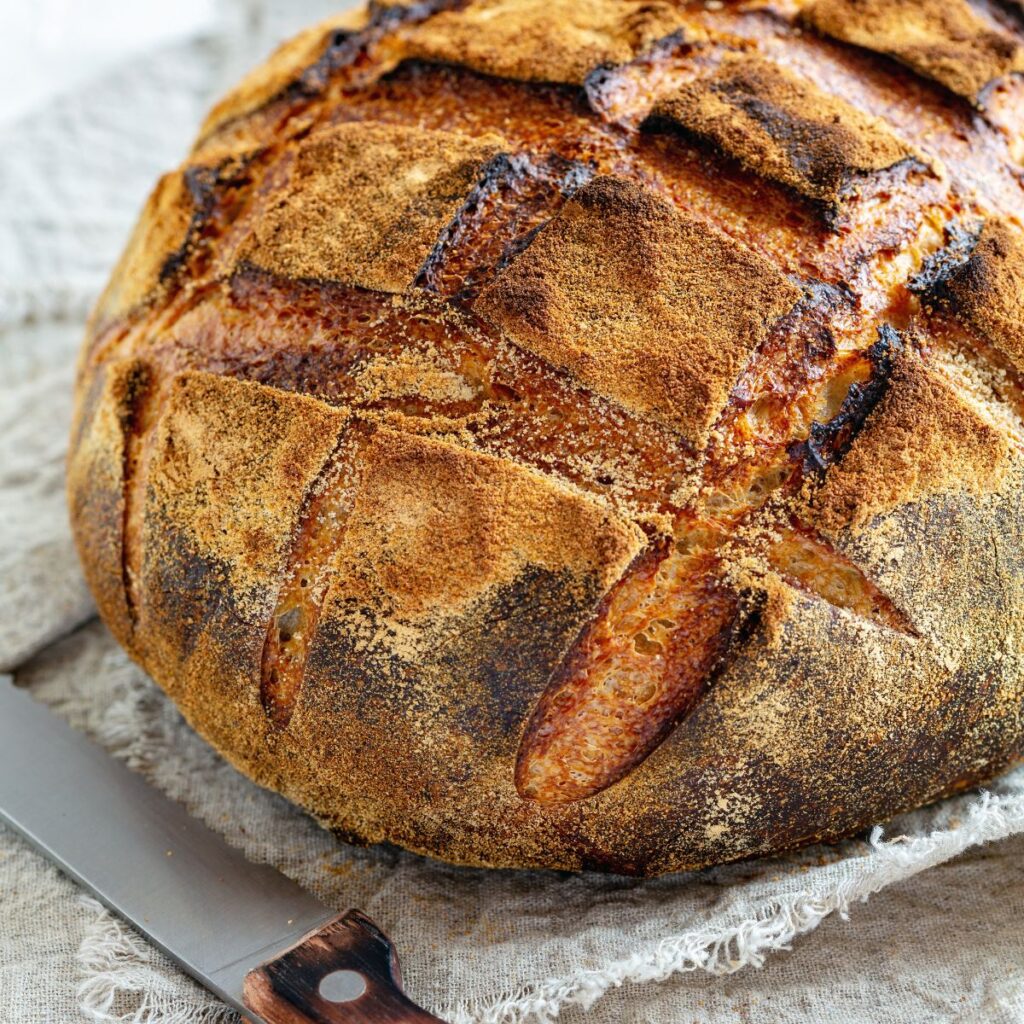
Freezing Whole Sourdough Loaves: The Best Method
When it comes to freezing sourdough bread, the best results are achieved by freezing the entire loaf. This method ensures that the bread retains its moisture, flavor, and texture more effectively. To get started, follow these simple steps:
- Start with Fresh Sourdough Bread: Choose a fresh loaf of sourdough bread at room temperature. Using bread that has just come out of the oven or has cooled completely will yield the best quality once thawed.
- Wrap it Up: First, tightly wrap the whole loaf of bread in plastic wrap. This will prevent any excess air from reaching the bread, minimizing the risk of freezer burn. For added protection, place the wrapped loaf in a plastic bag and seal it tightly.
- Label and Store: Label the bag with the date and contents, as this will help you keep track of its freshness. Now, place the wrapped loaf in the freezer.
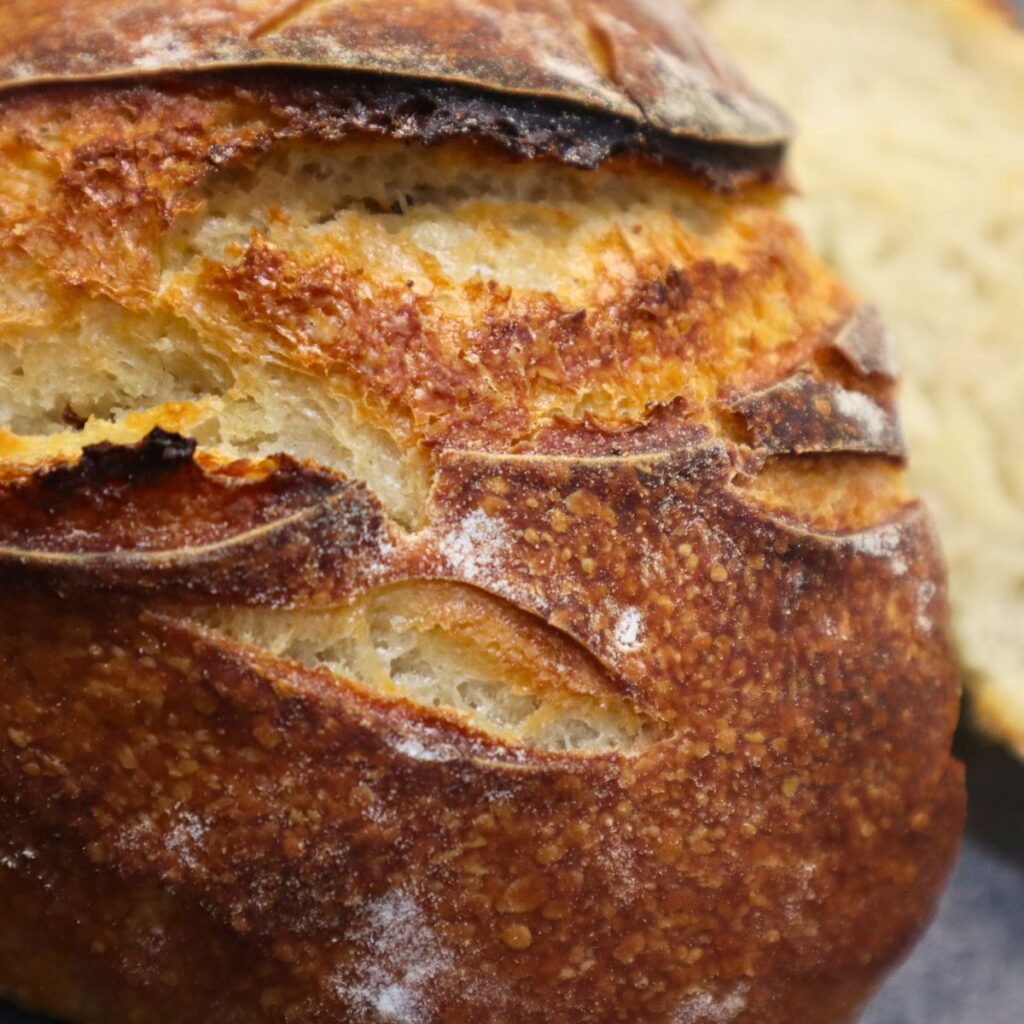
The Freezing Process and Long-Term Storage
As the sourdough bread freezes, the cold temperatures slow down the staling process by minimizing the movement of water molecules within the bread. Freezing also helps preserve the wild yeast and lactic acid bacteria present in the dough, which contribute to the bread’s unique flavor profile.
For long-term storage, it’s a good idea to transfer the wrapped loaf into a freezer-safe bag or container. This additional layer of protection helps maintain the texture of the bread and prevents any unwanted odors from seeping in. If you plan to use the frozen sourdough bread within a month, the initial wrapping in plastic wrap and a plastic bag will suffice.
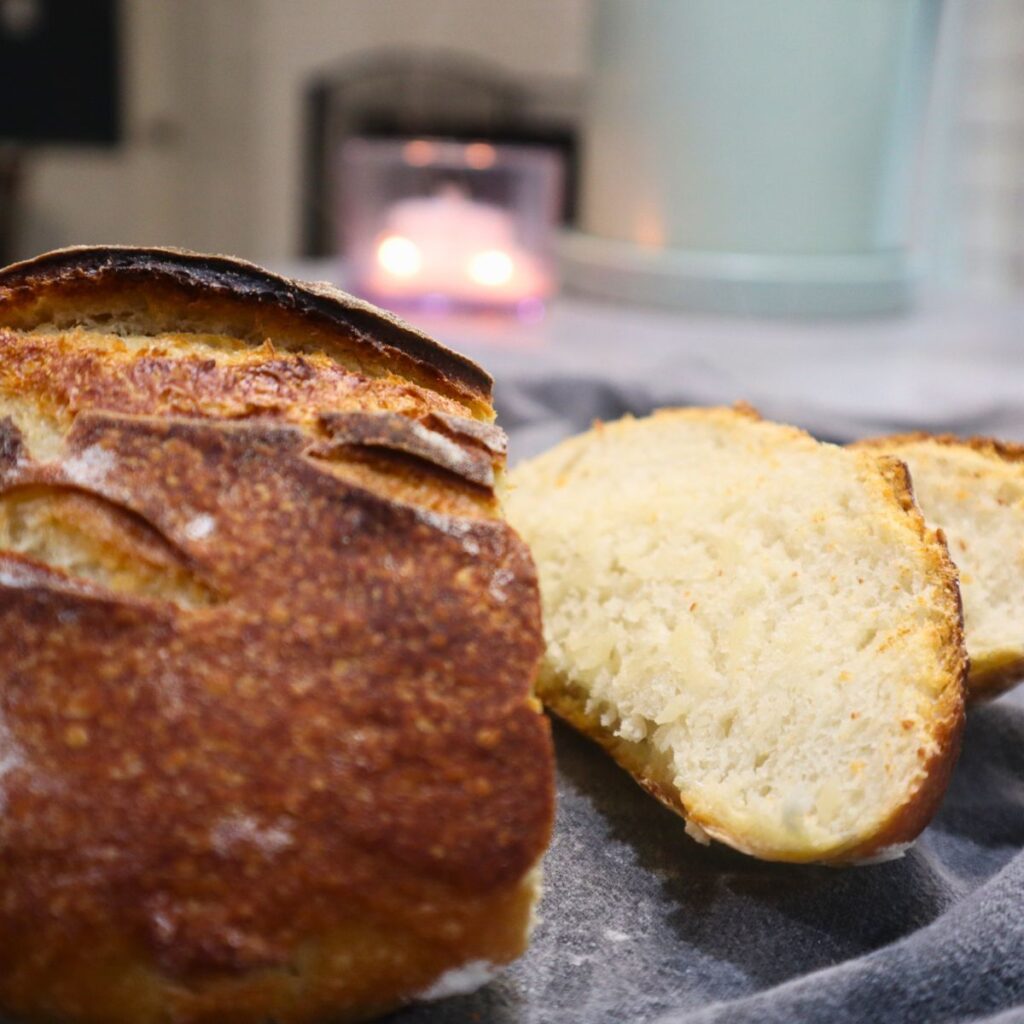
Freezing Individual Slices Of Sourdough Bread
If you find yourself needing smaller portions for later use, freezing sourdough bread slices is a great option. Here’s how you can do it:
- Pre-Slice the Bread: Slice the sourdough bread into individual slices before freezing. This will make it easier to retrieve a single slice when needed.
- Separate and Wrap: Place each slice in a layer of parchment paper or wrap them individually in plastic wrap. Wrapping them separately prevents the slices from sticking together, enabling you to take out as many as you need at a time.
- Bag it Up: Put the wrapped slices in a freezer bag, removing as much air as possible. Alternatively, you can use a ziplock bag and squeeze out excess air. Properly sealed bags ensure the slices remain fresh and free from freezer burn.

How Do You Defrost Sourdough Bread?
When the time comes to enjoy your frozen sourdough bread, there are a few ways you can thaw and reheat it, depending on your preference and time available.
- Thaw at Room Temperature: For whole loaves, remove them from the freezer and allow them to thaw at room temperature. This may take a few hours or even overnight, depending on the size of the loaf. Once thawed, the bread can be enjoyed as is or lightly toasted in a preheated oven for a warm, crusty exterior.
- Individual Slices: To thaw individual slices, remove them from the freezer and let them sit at room temperature for around 10-15 minutes. If you’re in a hurry, you can pop the slices directly into a toaster oven or a preheated oven for a quick warm-up.
Storing the Thawed Bread
Once the sourdough bread is fully thawed, it’s essential to store it properly to maintain its freshness. If you plan to consume it within a day or two, a bread box or a paper bag will do the trick. However, if you want to extend its shelf life further, consider using beeswax wrap or a plastic bag designed for storing bread. These options help retain moisture and prevent the bread from drying out.
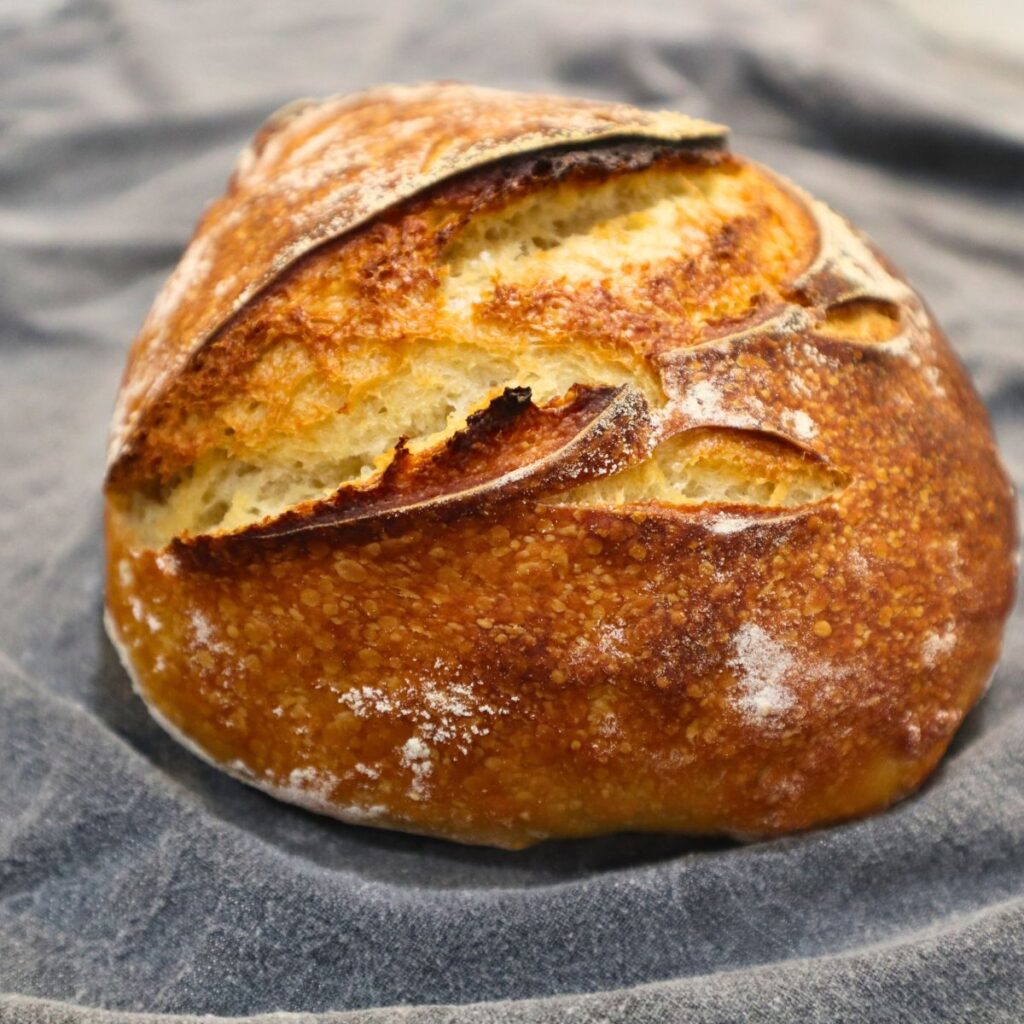
Using Frozen Sourdough Bread in Recipes
Frozen sourdough bread isn’t limited to being enjoyed on its own. It can also be utilized in various culinary creations. Try using it to make delicious French toast or breadcrumbs for coating fish or chicken.
Will Freezing Sourdough Bread Change The Texture Or Taste?
Freezing sourdough bread can slightly alter its texture, but when done correctly, the changes are minimal. The bread may become slightly denser after freezing and thawing, but it should still retain its overall softness and chewiness. It’s important to note that the texture change is often more noticeable in sliced bread rather than whole loaves. However, the taste of the sourdough bread should remain relatively unchanged. The distinct tangy flavor and complex aroma that sourdough is known for should still be present even after freezing. By following proper freezing and thawing techniques and storing the bread well, you can preserve the texture and taste of your sourdough bread to a great extent.
How Long Will Sourdough Bread Last In The Freezer?
When stored properly in the freezer, sourdough bread can maintain its quality for an extended period. Generally, sourdough bread can be safely stored in the freezer for up to 3 months without a significant loss in flavor or texture. However, it’s important to note that the longer the bread remains frozen, the greater the chance of slight changes in texture and taste. To ensure the best results, it is recommended to consume the frozen sourdough bread within the first month. By adhering to proper freezing techniques, such as tightly wrapping the bread to prevent freezer burn and using freezer-safe bags or containers, you can maximize the shelf life and enjoy delicious sourdough bread even after an extended time in the freezer.
Delicious Sourdough Bread
If you’ve enjoyed learning about how to freeze sourdough bread, I encourage you to explore my other sourdough bread recipes on my blog.
EASY SOURDOUGH BREAD RECIPE (PERFECT FOR BEGINNERS)
HOW TO BAKE SOURDOUGH BREAD WITHOUT A DUTCH OVEN
HOMEMADE SOURDOUGH BREAD BOWL RECIPE (EASY TO MAKE)
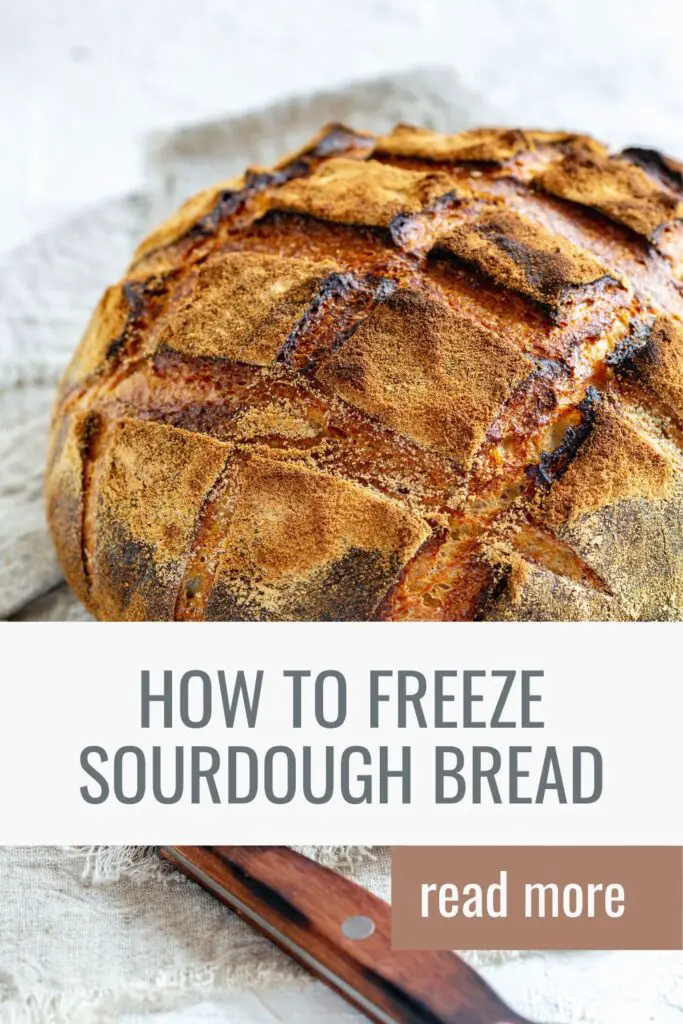

Leave a Reply